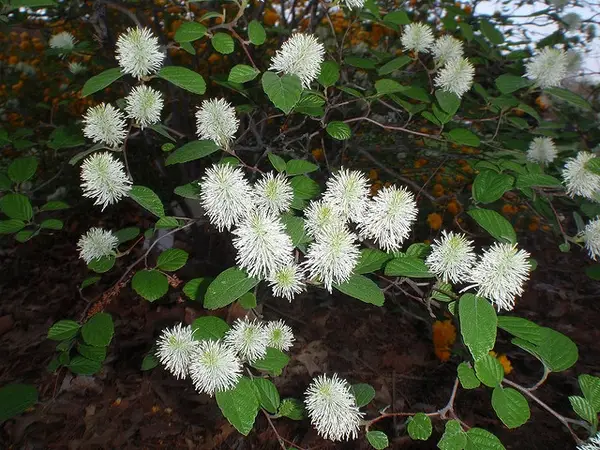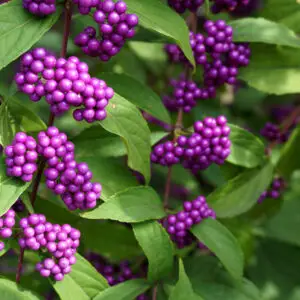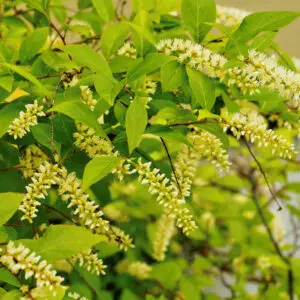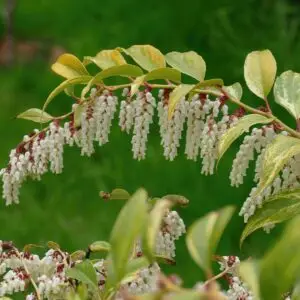| Size | Trade Gallons, Two Gallons, Three Gallons |
|---|
Fothergilla gardenii – Dwarf Fothergilla(B&B.DR.FC.FRG.H.NB.OP.SPC)
$40.00
Ecosystem Services:
(B)-Birds (B&B)-Birds & Butterflies
(BTF)-Butterflies (BW)-Black Walnut Resistant
(DR)-Deer Resistant (DRGHT)-Drought Resistant
(EC)-Erosion Control (EVR)-Evergreen
(FC)-Fall Color (FRG)-Fragrant
(GRD)-Groundcover (H)-Host plant
(HMR)-Hummingbirds (M)-Mammals
(MTH)-Moths (N)-Nectar
(NB)-Native Bees (NST)-Nesting Material
(OP)-Other pollinators (RR)-Rabbit Resistant
(SHWY)-Showy (SPC)-Specimen Plant
Coastal witch-alder is a low maintenance deciduous shrub in the Hamamelidaceae (witch-hazel) family that is native to the coastal plains of the southern United States. In the wild, it is apt to grow in wet savannas, pocosins, baygalls, and bogs.
It grows best in rich moist, slightly acidic, organically rich, well-drained soils in full sun to partial or dappled shade. While the flower display and fall color are often best in full sun, the shrub overall does better with some afternoon shade. It will tolerate wet soils and compaction yet is also drought tolerant.
The shrub begins with a rounded habit and matures to a height of 3 to 6 feet and a width of 2 to 6 feet, thus its alternate name of Dwarf Fothergilla. Over time, if suckers are not removed, it will colonize other areas of the landscape. Propagate this shrub by stem cuttings as the seeds are difficult to germinate.
Coastal witch-alder has no petals; the showy part of its flowers are its aromatic stamens which resemble bottle brushes and emerge before the leaves in the spring. The blue-green leathery leaves turn to vibrant reds, oranges, and yellows providing knock out color in the fall landscape depending on the growing conditions.
Bees and pollinators are attracted to this honey-scented shrub, making it an ideal addition to pollinator, native, or children’s gardens. It also works well planted along a foundation, as a specimen plant in a woodland or cottage garden or grouped in mass to create an informal, low hedge.
Host plant for the American Holly Azure Butterfly/





